From the Trenches
Aftermath of War
By JARRETT A. LOBELL
Monday, October 05, 2015
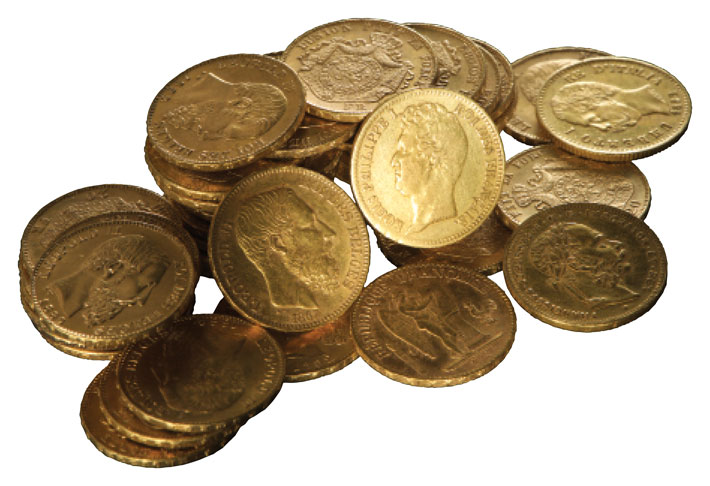 Among the many things that seemingly disappeared during the chaotic end of World War II were 217 gold coins recently rediscovered by a metal detectorist who alerted archaeologists to the find. The coins date to between 1831 and 1910 and had been placed in two sacks closed with official bank seals, and then hidden at least three feet underground. Archaeologist Edgar Ring of the Lüneburg Museum thinks they may have been stolen from the local branch of the Deutsche Reichsbank, the Nazi-era central bank. “So far we can only speculate how the sacks came to the site and why they weren’t picked up,” says Ring.
Among the many things that seemingly disappeared during the chaotic end of World War II were 217 gold coins recently rediscovered by a metal detectorist who alerted archaeologists to the find. The coins date to between 1831 and 1910 and had been placed in two sacks closed with official bank seals, and then hidden at least three feet underground. Archaeologist Edgar Ring of the Lüneburg Museum thinks they may have been stolen from the local branch of the Deutsche Reichsbank, the Nazi-era central bank. “So far we can only speculate how the sacks came to the site and why they weren’t picked up,” says Ring.
Mysterious Golden Sacrifice
By HYUNG-EUN KIM
Monday, October 05, 2015
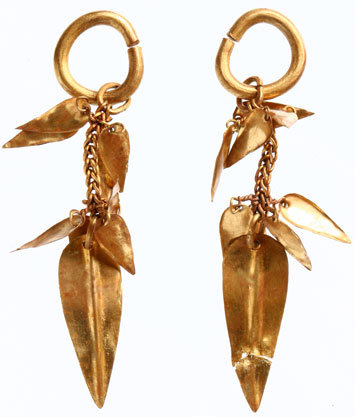 Archaeologists excavating the Geumgwanchong (“Gold Crown”) tomb in Gyeongju in the Korean province of North Gyeongsang have discovered an extremely rare pair of gold earrings dating to the Silla Dynasty (57 B.C. to A.D. 935). “Although Koreans have found hundreds of Silla-era gold earrings in tombs that belonged to noblemen and noblewomen,” according to Dae-hwan Kim of the National Museum of Korea’s archaeology and history department, “the composition, forms, and patterns on these earrings have never been seen.” The Geumgwanchong tomb was constructed between the fifth and early sixth centuries, and is the site where the first Silla gold crown was uncovered when the tomb was originally excavated in 1921.
Archaeologists excavating the Geumgwanchong (“Gold Crown”) tomb in Gyeongju in the Korean province of North Gyeongsang have discovered an extremely rare pair of gold earrings dating to the Silla Dynasty (57 B.C. to A.D. 935). “Although Koreans have found hundreds of Silla-era gold earrings in tombs that belonged to noblemen and noblewomen,” according to Dae-hwan Kim of the National Museum of Korea’s archaeology and history department, “the composition, forms, and patterns on these earrings have never been seen.” The Geumgwanchong tomb was constructed between the fifth and early sixth centuries, and is the site where the first Silla gold crown was uncovered when the tomb was originally excavated in 1921.
Archaeologists are also intrigued by the fact that the earrings likely belonged to a male—Silla men often wore thin earrings, while women wore thicker ones—who was a victim of human sacrifice, a common custom in ancient Korea. The identity of the Geumgwanchong tomb’s owner remains one of the most enduring mysteries in Korean archaeology. Researchers have found items, including a sword with engraved letters reading “King Yisaji,” but there is no mention of him in existing Silla records.
Lake George's Unfinished Fort
By JASON URBANUS
Monday, October 05, 2015
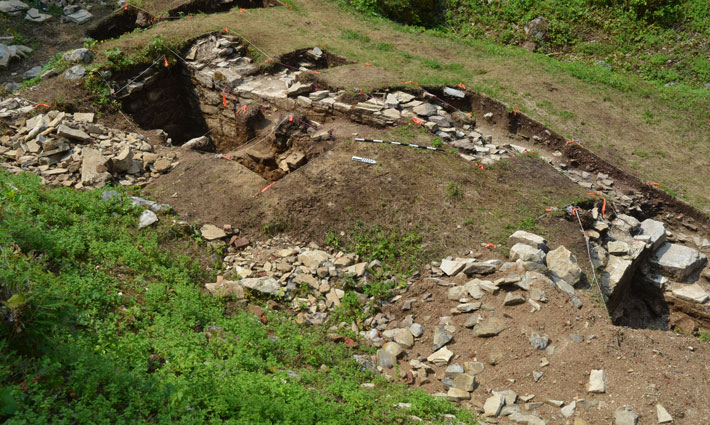
Archaeologists working near upstate New York’s Lake George have uncovered ruins from a partially constructed British fort that was once planned to be their largest in North America. Due to its key location along the waterways connecting New York and Canada, Lake George played a crucial role in the eighteenth-century French and Indian War and, later, the Revolutionary War. The lake and its forts, including Ticonderoga and William Henry, were the sites of pivotal clashes between French and British troops, described famously in James Fenimore Cooper’s The Last of the Mohicans. In 1759, British general Jeffrey Amherst ordered the construction of a massive new fort, Fort George, on a rise overlooking the lake’s southern shore. However, after Amherst’s troops captured the French Fort Carillon (renamed Ticonderoga) later that year, work on Fort George ceased, with only one large corner bastion having been completed. Even so, both British and American soldiers used the site for more than two decades.
The current archaeological investigation, directed by David Starbuck of Plymouth State University and researchers from SUNY Adirondack, is searching beyond the old fort’s known ruins, now part of a public park. “Although the scenic ruins of Fort George are an annual attraction for hundreds of thousands of summer visitors, until recently there was no awareness of what else might have survived,” says Starbuck. The team discovered sections of a stone wall, measuring at least six feet high and five feet thick, along with the remains of underground casement rooms used for the storage of supplies and munitions. Artifacts such as tin-glazed earthenware pottery, buttons, butchered bones, and musket balls are helping to reveal what life was like for the provincial colonial-era soldier. The fort’s masonry also betrays the change in British mentality regarding fortifications in the area. “Most of these frontier forts were ephemeral and built to last only a season or two,” says Starbuck. “Only the ruins of Fort George reveal that a British garrison had built more permanent walls, perhaps hoping that they might better survive the next artillery bombardment from French attackers.”
Last Flight of a Tuskegee Airman
By SAMIR S. PATEL
Monday, October 05, 2015
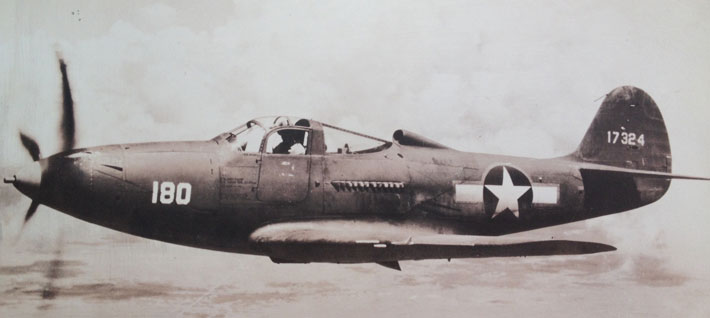
The wreckage of a Bell P-39 Airacobra in Lake Huron—last flown on a 1944 training mission by 2nd Lt. Frank Moody—was examined recently by a team led by Wayne Lusardi, Michigan’s state maritime archaeologist. Moody, who died in the crash, was one of the famed Tuskegee Airmen, the U.S. military’s first group of African-American aviators. This is the first archaeological documentation of the wreckage, which was found last year. Lusardi’s team included divers from the Thunder Bay National Marine Sanctuary and Diving with a Purpose (DWP), a nonprofit dedicated to maritime history and archaeology involving African Americans. Five DWP members came from across the country to help with the project, and held a brief service for Moody aboard the dive boat. For more about the underwater archaeology of Lake Huron, see “Shipwreck Alley” (January/February 2015).
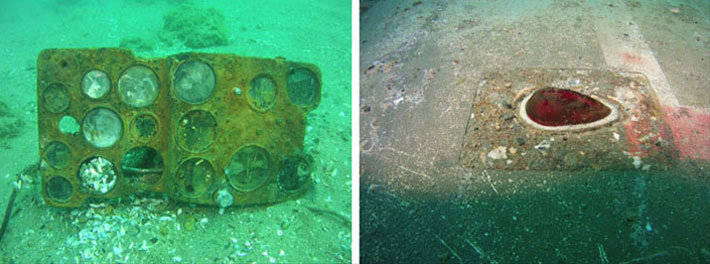
Slinky Nordic Treasures
By JACK MARTINEZ
Monday, October 05, 2015
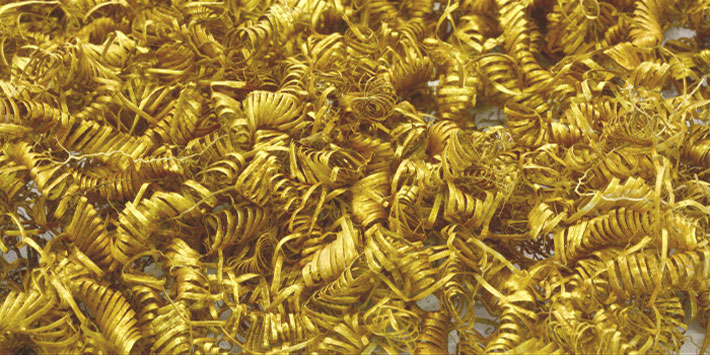
Archaeologists have excavated a cluster of unusual gold spirals at a site in the Zealand region of eastern Denmark. Researchers from the Danish National Museum found 2,000 of the delicate, spring-like artifacts in a pair of concentrated deposits, preserved under layers of plowed soil.
Flemming Kaul of the Danish National Museum says that it is not clear what the spirals meant or were used for, but that their purpose was probably ritualistic. Approximately 300 of them were found close to pitch fragments that suggest they had been placed in a wooden votive container. They date to the Nordic Late Bronze Age, between 900 and 700 B.C., when the local culture worshipped a sun god, according to Kaul.
In the nineteenth century, carved gold vessels were found at the site, and two years ago amateurs found gold bracelets nearby. The finds suggest that the region was a center of wealth. “We regard this area, the gold-richest area of Scandinavia,” Kaul says, “as a center for rituals and for religion.”
Advertisement
Advertisement
IN THIS ISSUE
From the Trenches
The Second Americans?
Off the Grid
How Much Water Reached Rome?
Paleo-Dentistry
Friars' Leather Shop
The Gates of Gath
Slinky Nordic Treasures
Lake George's Unfinished Fort
Last Flight of a Tuskegee Airman
Mysterious Golden Sacrifice
Aftermath of War
Game of Diplomacy
The Magnetism of the Iron Age
Rituals of Maya Kingship
Premature Aging
Switzerland Everlasting
Advertisement

Recent Issues
-
 May/June 2024
May/June 2024
-
 March/April 2024
March/April 2024
-
 January/February 2024
January/February 2024
-
 November/December 2023
November/December 2023
-
 September/October 2023
September/October 2023
-
 July/August 2023
July/August 2023
-
 May/June 2023
May/June 2023
-
 March/April 2023
March/April 2023
-
 January/February 2023
January/February 2023
-
 November/December 2022
November/December 2022
-
 September/October 2022
September/October 2022
-
 July/August 2022
July/August 2022
-
 May/June 2022
May/June 2022
-
 March/April 2022
March/April 2022
-
 January/February 2022
January/February 2022
-
 November/December 2021
November/December 2021
-
 September/October 2021
September/October 2021
-
 July/August 2021
July/August 2021
-
 May/June 2021
May/June 2021
-
 March/April 2021
March/April 2021
-
 January/February 2021
January/February 2021
-
 November/December 2020
November/December 2020
-
 September/October 2020
September/October 2020
-
 July/August 2020
July/August 2020
-
 May/June 2020
May/June 2020
-
 March/April 2020
March/April 2020
-
 January/February 2020
January/February 2020
-
 November/December 2019
November/December 2019
-
 September/October 2019
September/October 2019
-
 July/August 2019
July/August 2019
-
 May/June 2019
May/June 2019
-
 March/April 2019
March/April 2019
-
 January/February 2019
January/February 2019
-
 November/December 2018
November/December 2018
-
 September/October 2018
September/October 2018
-
 July/August 2018
July/August 2018
-
 May/June 2018
May/June 2018
-
 March/April 2018
March/April 2018
-
 January/February 2018
January/February 2018
-
 November/December 2017
November/December 2017
-
 September/October 2017
September/October 2017
-
 July/August 2017
July/August 2017
-
 May/June 2017
May/June 2017
-
 March/April 2017
March/April 2017
-
 January/February 2017
January/February 2017
-
 November/December 2016
November/December 2016
-
 September/October 2016
September/October 2016
-
 July/August 2016
July/August 2016
-
 May/June 2016
May/June 2016
-
 March/April 2016
March/April 2016
-
 January/February 2016
January/February 2016
-
 November/December 2015
November/December 2015
-
 September/October 2015
September/October 2015
-
 July/August 2015
July/August 2015
-
 May/June 2015
May/June 2015
-
 March/April 2015
March/April 2015
-
 January/February 2015
January/February 2015
-
 November/December 2014
November/December 2014
-
 September/October 2014
September/October 2014
-
 July/August 2014
July/August 2014
-
 May/June 2014
May/June 2014
-
 March/April 2014
March/April 2014
-
 January/February 2014
January/February 2014
-
 November/December 2013
November/December 2013
-
 September/October 2013
September/October 2013
-
 July/August 2013
July/August 2013
-
 May/June 2013
May/June 2013
-
 March/April 2013
March/April 2013
-
 January/February 2013
January/February 2013
-
 November/December 2012
November/December 2012
-
 September/October 2012
September/October 2012
-
 July/August 2012
July/August 2012
-
 May/June 2012
May/June 2012
-
 March/April 2012
March/April 2012
-
 January/February 2012
January/February 2012
-
 November/December 2011
November/December 2011
-
 September/October 2011
September/October 2011
-
 July/August 2011
July/August 2011
-
 May/June 2011
May/June 2011
-
 March/April 2011
March/April 2011
-
 January/February 2011
January/February 2011
Advertisement






